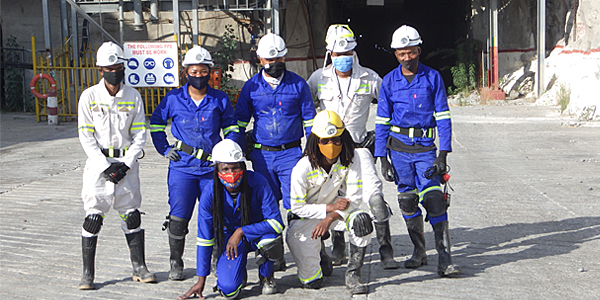Geophysicists develop innovative seismic technologies
- Wits University
Wits geophysicists have invented cost-effective and environmentally friendly seismic technologies that will contribute to sustainable mining exploration.
The innovation, a project led by the Wits Seismic Research Centre in the School of Geosciences, is a response to the Advanced Orebody Knowledge call titled, Developing technologies that will be used to obtain information ahead of the mine face such as Tunnel Seismic Prediction (TSP).
Led by Professor Musa Manzi, Director of the Wits Seismic Research Centre, this innovative active-passive seismic approach is envisaged to revive the seismic mining methods in the country and will contribute to sustainable mining activities. Manzi says that this innovation, born in November 2020, seeks to address challenges of sustainable exploration of mineral resources that are vital to the economy and technological advancement within the African continent and in the world.
“For economic and environmental reasons, the use of traditional active seismic methods has been slowly abandoned in South Africa. Our innovative seismic approach is bringing some hopes to revive this activity and bring solutions to mining industry,” says Manzi.
The project aims to combine active and passive seismic methods, using a combination of innovative instruments, for exploration in noisy, near-mine environments at 300-3500 m depths.
“Our project has access to underground gold and platinum mine sites in South Africa. The test sites were chosen based on existing data for validation purposes, but also for the prospects of new exploration targets.”

Last year, the team tested their seismic method at an underground platinum mine in Rustenburg to address the challenge of deep minerals explorations in South Africa. The experiment aimed to reduce drilling costs, lower exploration costs, maximise mine safety, increase the possibility of finding new prospects, and increase the life of mine.
The equipment used in this innovation is flexible and versatile. The wireless recording systems are easy to operate because they require less field logistic than cabled systems. These systems are also autonomous and can be left on the ground or inside the mine tunnel to record for the time life of the battery, which can be around a month. Manzi adds that their innovation is also “easier to adapt to a small scale seismic survey inside the mine where space is limited and conditions are challenging”. The land streamer saves time as it eliminates the need to plant traditional geophones on the ground, which can also be difficult to do in mine tunnels says Manzi.
The team is collaborating with local and international researchers to improve the passive seismic imaging resolution of the innovation. This will boost the power of the resolution to ensure that the seismic innovation is sufficient for all mineral exploration projects.
The limited research and innovative initiatives on mining explorations in the world have presented an opportunity for the team to develop and test seismic technologies using Deep South African mines, says Manzi. He adds that it has also contributed to seismic knowledge building and the development of human capacity in South Africa.
“For example, the project involved more than 25 young professionals (honours, masters, PhD, early-career researchers and technology developers), who will help meet the urgent need for mineral exploration specialists in Africa. The data collected will continue to be used for research purposes at postgraduate level at Wits.”
Manzi believes this project has the potential to enrich exploration geophysics in Africa with a wide range of innovations, ranging from new instruments and survey design methodologies that allow us to acquire and process the data better. “The two key elements in our success are the strong collaboration between industry and the academy, and the multidisciplinary approach that integrated mineral exploration objectives with concerns for safety, the environment and society.”
The project involves partners from research institutions, mining companies, and high-tech small- and medium-sized enterprises in South Africa and Europe, all interested in advancing sustainable mining exploration initiatives. These include Wits University, Mandela Mining Precinct, Smart Exploration, University of Pretoria, the Council for Scientific and Industrial Research, Geolinks, Tesseral Technologies Inc., HiSeis Pty Ltd, Engineering and Exploration Geophysical Services CC, and Open Ground Resources.
